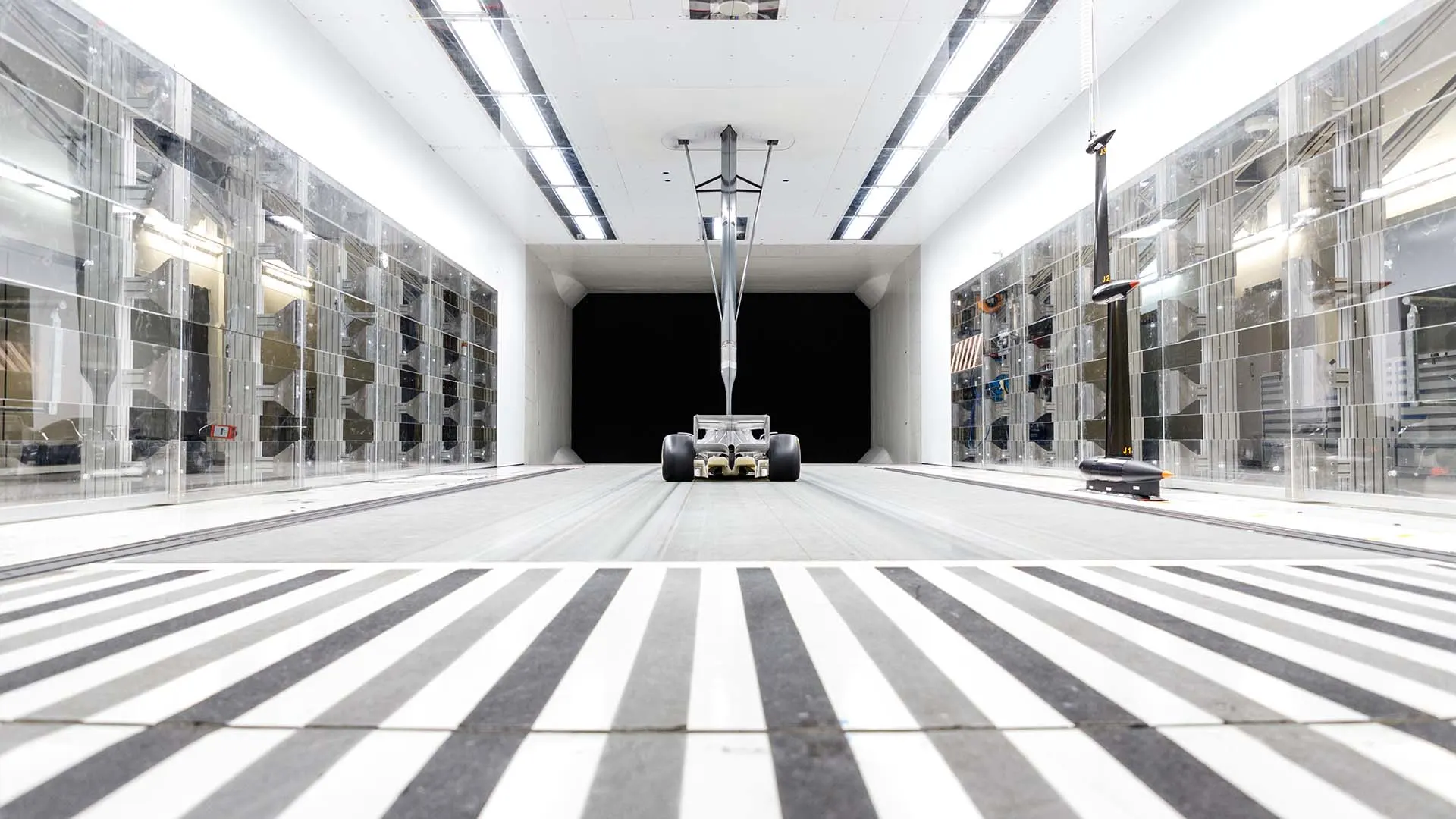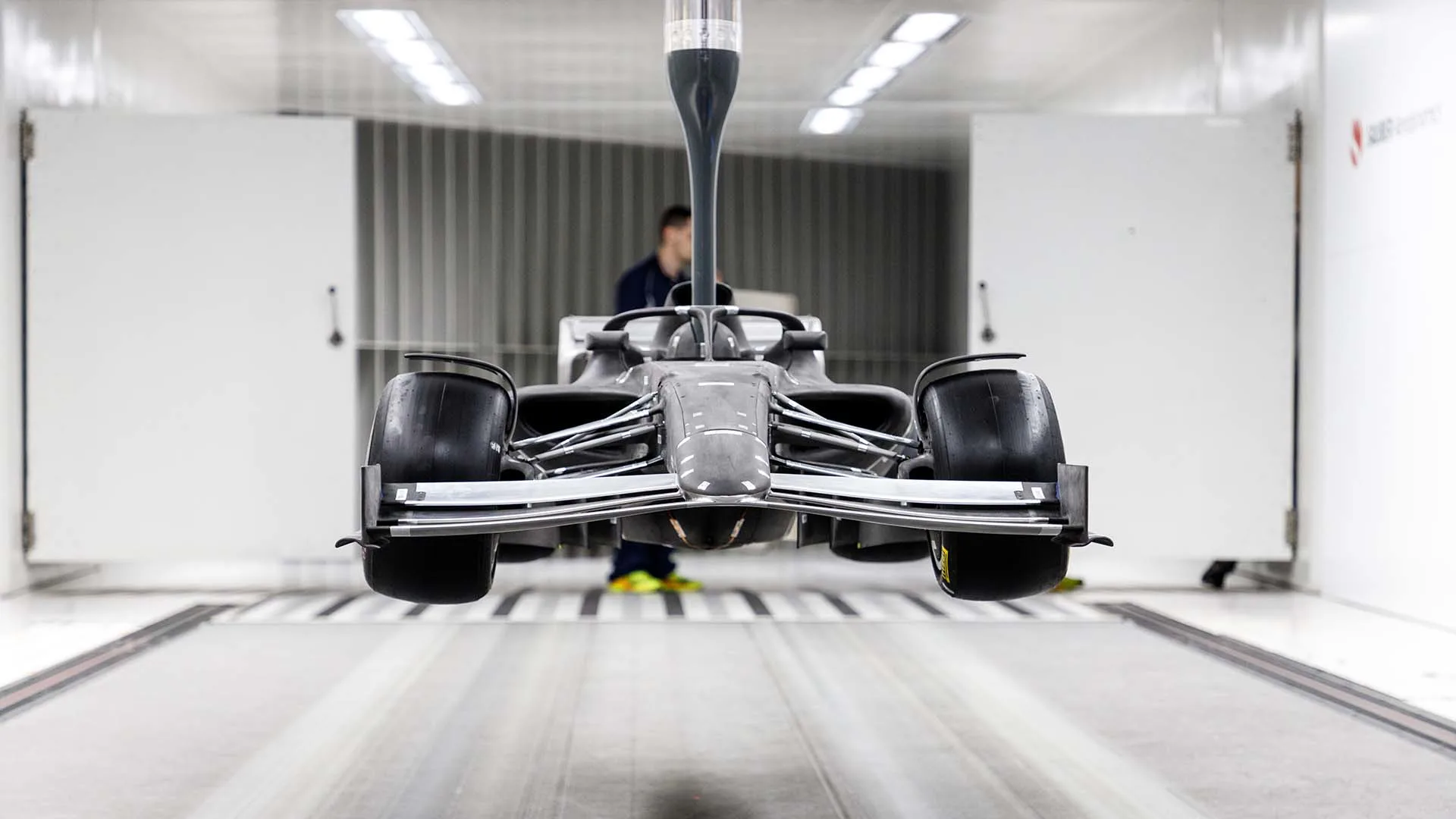The wind tunnel testing so far has proved encouraging, with the results suggesting the 2021 cars should be able to follow each other more closely. Now attention is turning to refining the rules – and more specifically breaking the rules. You may think that’s a strange thing to do, so let us explain…
A large part of Formula 1’s Motorsports team and the FIA’s focus up to now has been on trying to improve the wake, in order to allow the cars to get closer and thus improve the chances of overtaking, rather than washing out. The teams won’t be doing that once they get hold of the finalised regulations. Oh no.
Their focus will be on improving their performance, making their car faster. A potential unintended consequence of doing that is that they have a negative impact on the wake, undoing to an extent the work F1 and the FIA have done.
So that’s why F1’s Chief Technical Officer Pat Symonds and the FIA’s Head of Single Seater Technical Matters Nikolas Tombazis and their respective teams have started trying to break their own rules.
“We are trying to see where the rules we have written are robust and where they might be a little weak,” says Symonds. “I’m sure ultimately the wake characteristics of a fully developed 2021 car are not going to be quite as good as we have got running at the moment, but I think they will still be very good, and it will be massively better than a 2019, or 2020 car. I’m absolutely certain of that.
“There are certain areas we know already where you can add performance but in doing so you damage the wake, so we have been quite prescriptive in those areas, because we’ve been trying to break the rules. There are other areas where we feel the design is robust so we’ve been less prescriptive in those areas.
“We’re trying to look for the loopholes, look for the unintended consequences. That’s actually a difficult thing to do when you have written the rules. That was my experience when we were working on the 2009 cars. Because I had been involved in writing the rules, I found it difficult to think of the loopholes as I knew what was intended. That was a lesson learned, we have taken it on-board.
“We’re trying to forget what the intention was and looking at what we have actually written down and see if we can put our team hats on.”
Tombazis adds: “We are trying to find things that make the car go faster. These are things a team would do, you would want to put them on your car, but they might make the wake significantly worse. If the team makes the car faster but the wake doesn't get any worse, we don't have any problem with that. But if a team makes the car faster but hurts the wake, then clearly they will do it because if the rule permits it and we can't ask them to be benevolent. But we want to know about it so we can see if there's any fundamental weaknesses in the rules, any loopholes.
“We want to safeguard the wake performance but we don't want all cars to look the same or to be exactly the same. But there are some areas of the car where performance can be found and not worsen the key parameters of the following car and we want to encourage those areas to be a bit freer.”

While the current iteration, as seen in the wind tunnel video, is very close to what we can expect the 2021 cars to look like, there will still be changes, particularly concerning the front wing.
“There's a lot of work going on the front wing at the moment to improve some of its characteristics and also to make it look a bit less square,” says Tombazis.
As part of their attempts to break the rules, there will be two further wind tunnel sessions. The first will take place in October with a further test planned for December following the publication of the regulations, a timeline Tombazis says provides for adjustments to be made in line with the governance of the sport.
“As with any set of regulations it is a constantly evolving process,” says Tombazis. “In October we will publish a full set of technical and sporting regulations which will come into force in 2021, and will not fundamentally be changed. If we do find an area where we feel some updates are necessary to maintain our goals for better raceability, then this is something that we will be able to do working with the teams within certain time constraints.”
Finally, Symonds adds that beyond the tests aimed at the drafting of the 2021 regulations work will continue in order to monitor exploitation of the rule set.
"It’s not our intention to just stop at that point [in December]. We will continue to investigate, continue to develop, continue to try and exploit regulations, in the same way the teams will and from time to time next year, we’ll go back in the wind tunnel to check out results.”
Read more - FIRST LOOK: Formula 1’s 2021 car in the wind tunnel

Next Up
Related Articles
 End Of Year Reports 2025Haas’ best and worst moments from 2025
End Of Year Reports 2025Haas’ best and worst moments from 2025 F1 CEO Domenicali reflects on 'phenomenal' 2025
F1 CEO Domenicali reflects on 'phenomenal' 2025 Lindblad's car number confirmed for rookie season
Lindblad's car number confirmed for rookie season REVEALED: Your favourite race of the 2025 season
REVEALED: Your favourite race of the 2025 season Quiz10 quiz questions on British F1 World Champions
Quiz10 quiz questions on British F1 World Champions Tremayne'Why I’ll always have a soft spot for Sauber'
Tremayne'Why I’ll always have a soft spot for Sauber'
